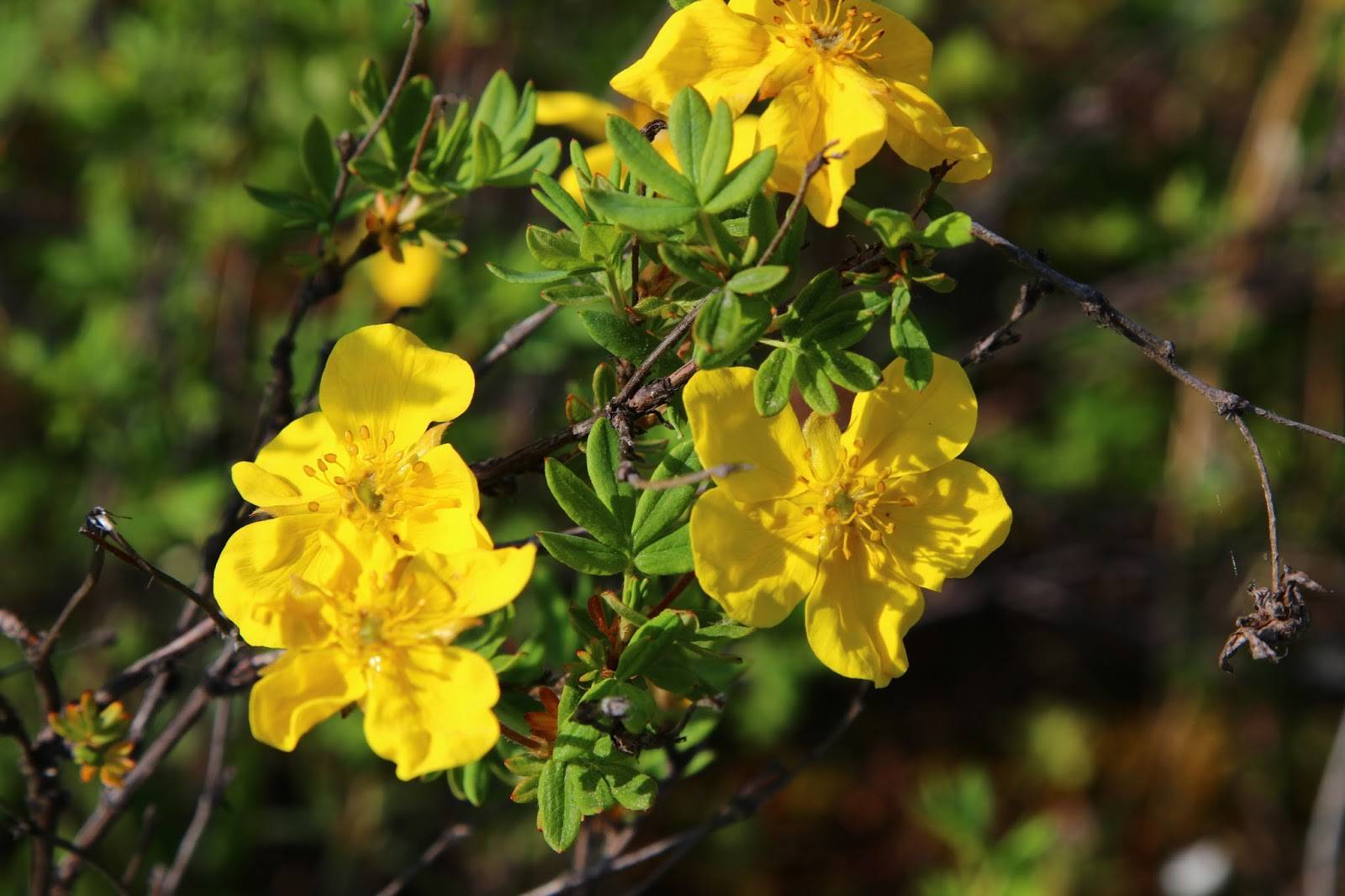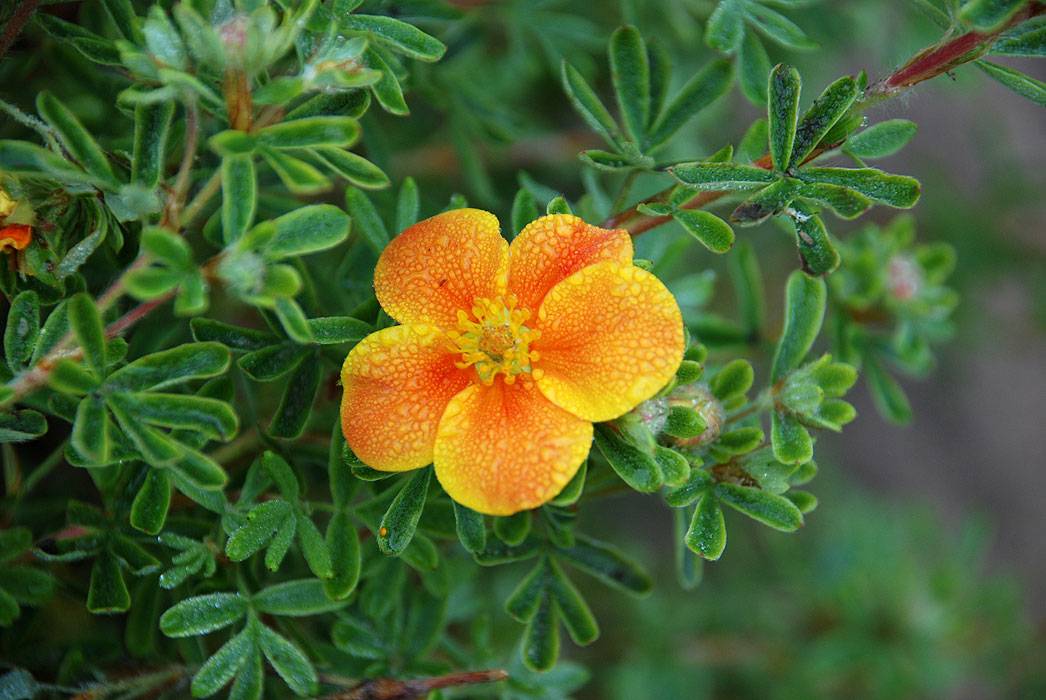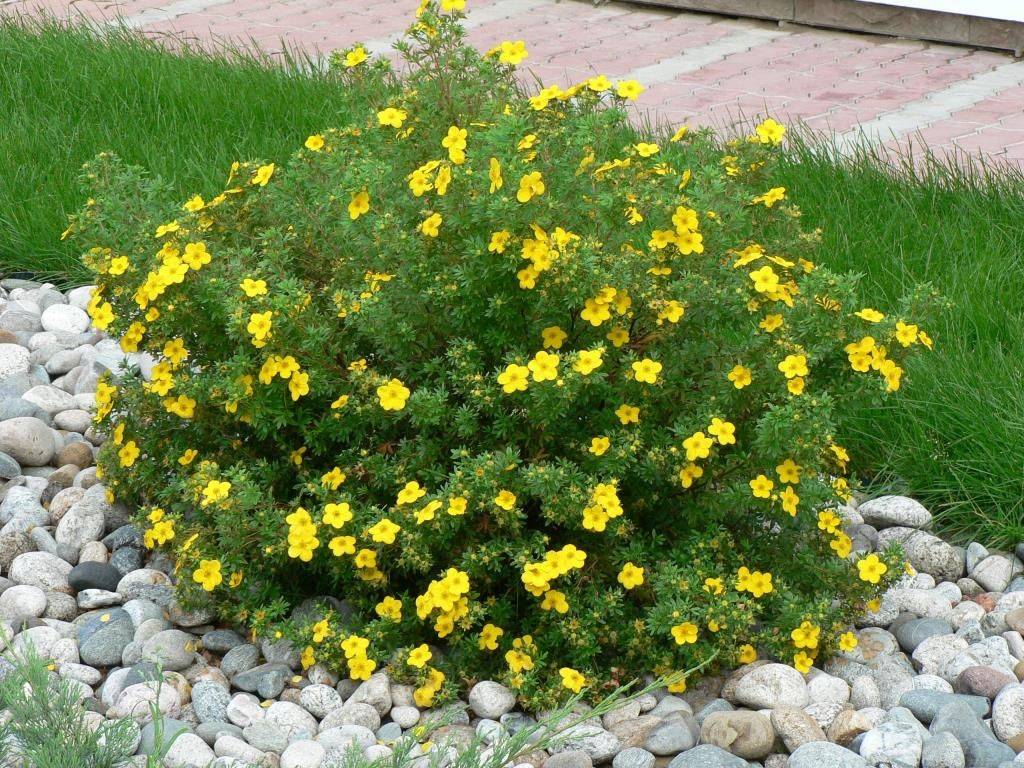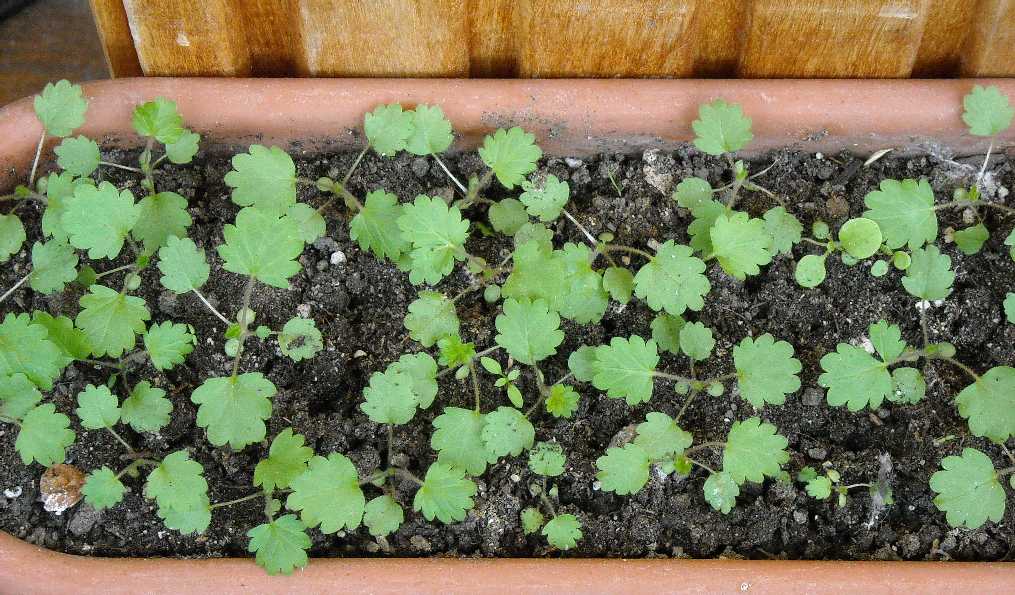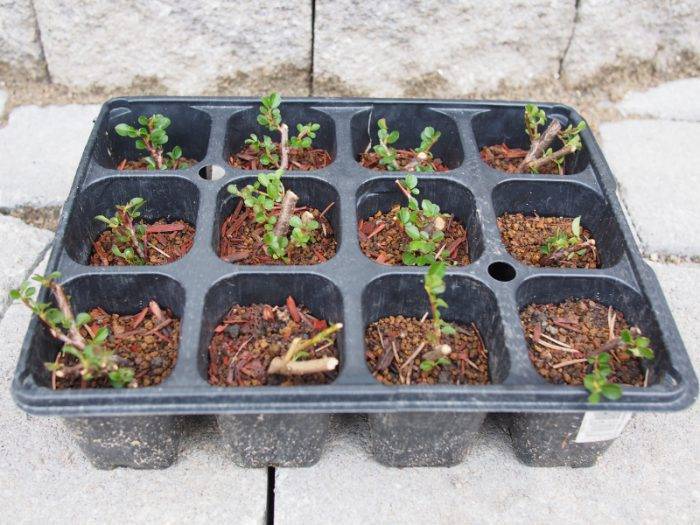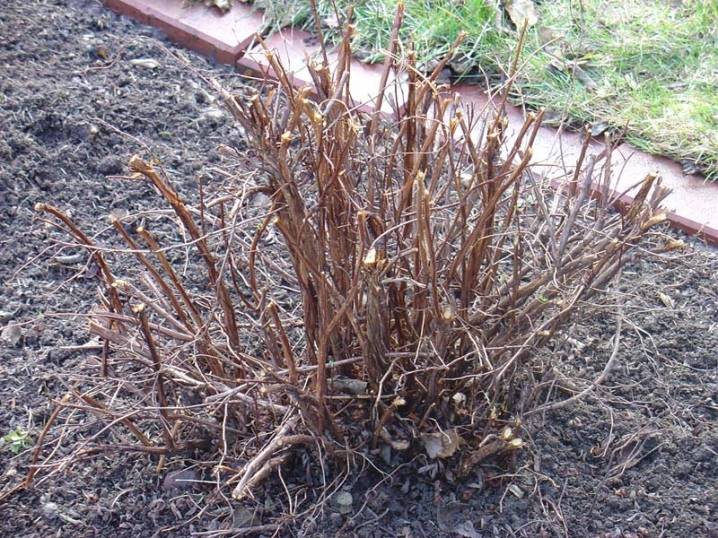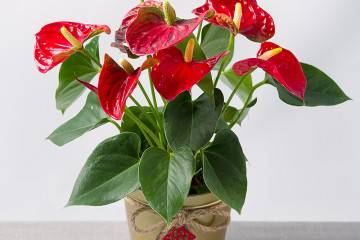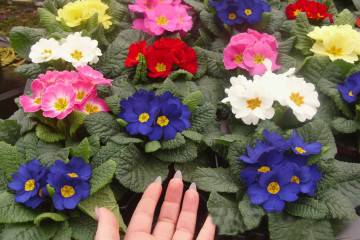Cinquefoil - reproduction for seating
Content:
In the temperate zone of Russia, there are about 300 species of perennials, annuals and dwarf shrubs belonging to the genus Potentilla (Rosaceae). In garden culture, the plant has gained popularity due to its decorative effect, unpretentiousness, long flowering period and valuable medicinal properties. Knowing how Potentilla reproduces, you can decorate your garden with it.
Description and biological features
In gardens, you can usually find shrub cinquefoil, often referred to as Kuril tea. The exact name is dasiphora shrub (Dasiphora fruticosa) or shrubby cinquefoil (Potentilla fruticosa), and the people call it "mighty" for a long list of medicinal properties.
The natural species is distributed throughout almost the entire Northern Hemisphere, with the exception of the Arctic Circle. Prefers mountainous terrain, occasionally occurs in damp, spring-flooded areas.
In its natural habitat, it is content with the available rainfall, which indicates the ability to survive in drought conditions. Loves bright lighting, as well as good moisture in well-drained, loose soils. The bush can grow in one place for up to 30 years. Flowering lasts from the end of June until the onset of frost. Due to the uncomfortable blooming of flowers, the timing of seed ripening also varies. In regions with early frost, seeds usually do not fully ripen.
The shrub can be erect or extended, with a height of 10 to 150 cm. The bark of old shoots is peeling reddish-brown or brownish-gray, and on young branches it is silky-hairy. In the fall, the foliage falls. The leaf is pinnate with 2 or 3 pairs of small leaves, of which the upper ones are often trifoliate, covered with hairs. The length of the leaves is from 5 to 30 mm, and the width is from 1 to 10 mm.
Buds appear between the leaves or on the tops of the shoots in 1 or 2-7 pieces, and only on the branches of this year. The corolla core looks fluffy due to the numerous stamens (up to 30 pieces). Petals are usually 5 or 4, they are quite large, colored yellow, red, pink, orange, rarely white.
Depending on the weather (temperature and humidity), the flower can remain open from 6 hours to 2 days, after which the petals fall off. The fruit is a collective achene, inside which there are small (0.7-2 mm in diameter) seeds.
When and how to propagate cinquefoil yellow or of another color
You can propagate your favorite variety by seeds, layering, cuttings and dividing the bush.
The seed method is the most laborious, since the flowering of seedlings occurs only in the second or fourth year of life. Therefore, the bushes on the site are usually propagated vegetatively, that is, they carry out cuttings of Potentilla.
Growing Potentilla from seeds
This method is used very rarely, only in the absence of the opportunity to obtain another planting material. Seedlings of the first year appear 3-4 weeks after sowing. Since the seeds are very small, they do not need to be embedded in the soil, they are sown on the surface throughout the summer. Seedlings are thinned out, leaving at least 15 cm between individual specimens.
The growth of the first year is small - up to 15 cm in height, no more. From the second year, exclusively ornamental garden varieties begin to bloom, and for the natural form of shrub Potentilla, flowering of plants older than 4 years is typical.
How to plant cinquefoil by dividing a bush
This method of reproduction of Potentilla shrub is suitable for those gardeners who have a Potentilla bush over 6-7 years old on their site. It is dug up in the last decade of May or the first decade of September. With a sharp knife, the bush is cut into 2-3 parts, leaving a strong bunch of roots on each. Each part is immediately planted in a new location.
Cinquefoil - propagation by cuttings
With equal success, you can use lignified shoots and younger (green) shoots for cutting cuttings. For successful rooting, immediately after cutting, the shoots are dipped into a growth stimulator. The best time to cut is early in the morning or late in the evening.
A good stalk is a twig 10-15 cm long, which has no buds, but has 2-4 internodes with healthy green leaves. The lower cut is 5-10 mm from the kidney, and the upper cut is just above the kidney.
The shelf life of cuttings is up to 2 days. After that, the leaves wilt, and there is no chance of rooting anymore. Since the rooting time is long enough, the soil and planting container should be disinfected to prevent the appearance of fungi and mold.
How to root Potentilla
Lignified cuttings have more chance of survival, therefore this method is considered the fastest. They can be cut at any time from spring to autumn. If the branches were cut in the fall, then they are dropped in the garden bed, sprinkled with a mixture of garden soil and sand to extract in the spring.
How to cut Potentilla in the summer:
- At the end of May and until autumn, the cuttings are almost completely added dropwise, leaving only 2 cm above the surface.
- Care depends on where the rooting is done. In the open field, it is worth covering the cuttings with plastic caps to avoid drying out. Watering is carried out as needed. Indoors, lignified cuttings do not need caps, but green ones are necessary.
- The place in which the cuttings will root should not be located under the scorching sun. Partial shade is best.
- Lime peat is added to the soil, as well as perlite or vermiculite for looseness.
- Complex mineral fertilizer is applied only when all the signs are present - the cutting has taken root and started to grow, that is, after 6-8 weeks.
- Potentilla is not transplanted from the premises into the open ground immediately, but after preliminary hardening. This eliminates the likelihood of the death of bushes due to unsuccessful acclimatization. Usually 2-3 weeks are allotted for this, daily increasing the time spent in the fresh air by 10 minutes.
A stalk planted in open ground will only become an adult 2 years later.
How to care after seating
Like adult plants, cuttings after planting in the garden must be provided with sufficient moisture, periodic feeding, timely pruning and preparation for wintering.
Plants over 4 years old can survive even a very long drought, this will only lead to poor flowering, but not to death. A young bush needs watering weekly. Usually the next day after that, the soil is loosened, weeds are pulled out, the soil is mulched. A useful procedure is spraying with warm water in the evenings, when the sun has already set.
Among garden perennials, the popularity of bush Potentilla is only gaining momentum, because growing it is a matter of not only labor, but also patience. However, the result is worth the effort and the long wait.
